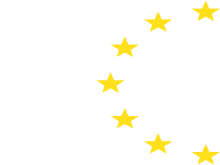Course/Event Essentials
Training Content and Scope
Other Information
The DNA molecule, which carries the instructions for life, is like a super-twisted rope or a spiral ladder forming a shape known as the double helix. It is not just an ordinary molecule—it is a polymer. This means it forms long chains composed of repeating building blocks. Thanks to its unique shape, DNA can twist, bend, and form complex structures, including knots and links, which are special types of topologies about which scientists are still learning a lot.
In the world of science and at the Polymer Institute of the Slovak Academy of Sciences, we use high-performance computers (Devana) to simulate and model how DNA behaves. These computer simulations, utilizing techniques such as molecular dynamics and Monte Carlo methods, allow us to explore how DNA twists, unravels, and organizes inside cells, forming the 3D structures we see in chromosomes. These simulations are crucial for answering important questions in various fields like biology, chemistry, and even nanotechnology.
In this lecture, we will explain how these simulations work, how DNA can unravel, and how its complex shapes compare to what we observe in experiments. We will also look at how we can study these knots and entanglements in special tiny channels in nanotechnological devices, which help us better understand this unique molecule.



